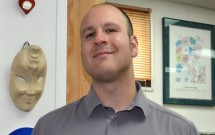
This essay was written as a reflection paper for Applied Theories of Human Development. In this class we discussed different stages of development in the human lifespan. As we all well know, adolescence is socially considered as a unique, often perplexing, and even difficult stage in life. What we all may not know is that adolescence ranges from about 12 to 24 years old. In fact, some studies posit that some humans do not reach full adulthood until as late as 28 years old. With that knowledge, how do we now understand the phenomenon of adolescence, certain types of behavior, and how can we expand our perspectives of what it means to be a developing person in our very complex world? We as a society can shift our view of adolescence from what is commonly a judgmental and critical view to one which is tolerant and inquisitive. We can shift from attitudes often expressing fear and condemnation to: 1) what is really going on inside of an adolescent; 2) how can we support adolescents during this exciting time as they embark on the journey of finding themselves and deciding who and what they want to be in the world?; and 3) how can we adults encourage one another to be adventurous, creative and engaged as we travel through various stages in our lives as well?
In Brainstorm: The Power and Purpose of the Teenage Brain, Daniel Siegel discusses and busts socially constructed myths regarding teen development by explaining in simple language adolescent brain development. Myth number one: teens’ hormones are raging out of control and cause teens to go mad. According to Siegel, science confirms that hormones do increase during adolescence but infamous behavioral patterns in teens are in fact due to changes in brain development. Myth number two: adolescents are immature or crazy. Siegel points out that adolescence should not be viewed as a hellish period to be endured by both adults and teens. Siegel posits that if mindfully cultivated, adolescence can be a time where teens thrive and prepare to become self-realized and self-actualized adults. Adolescent propensities to seek novelty and test boundaries are normal biological steps in brain development. Without taking these steps, youth would not reach out beyond family members, engage in certain rites of passages, or eventually build their own families. Experimenting with new things and pushing limits is a necessary part of maturation. Myth number three: adolescents move from depending on adults to complete independence. Siegel explores the concepts of interdependence and attachment and explains that throughout the life span a person moves from total dependence on caregivers as children, to distancing from caregivers during adolescence, to then both giving care, collaborating with and needing help from others later in life.
“Adolescence is not a period of being “crazy” or “immature.” It is an essential time of emotional intensity, social engagement, and creativity (Siegel, 2013, pg. 4). Siegel affirms this growth period as exactly what it ought and needs to be because it encapsulates the essence and energy of what it means to be human growing toward our great potential. Adults ought to strive to nourish their inner adolescent and novelty seeking behaviors in order to maintain inspiration and curiosity as intentional lifelong learners. While adolescents learn to harness all the manifestations of their vitality so they may grow into a Self who feels good to them, adults can also focus their energy and efforts on being the best versions of themselves too. In all actuality, development throughout the lifespan ends at death, and perhaps continues beyond death, who knows. Each day of life, regardless of one’s age, is an adventure and opportunity to achieve more aliveness and wholeness.
As a graduate student and emerging entrepreneur, I could not agree more with Siegel’s call to action for adults to cultivate the qualities of bravery manifested as trying something new and pushing real or perceived boundaries. Taking the risks to move across the country to attend Southwestern College and to start a nonprofit business with my mother is exactly my attempt to respond to such a call to action from him, from myself, and from Life. Currently, we are seeking funding for our nonprofit agency, CreativEmpowers, and our goal is to serve youth and families of incarcerated populations as well as incarcerated populations. While we plan to implement many projects, CreativEmpowers will begin in the spring or summer of 2017 by opening the doors of Clubhouse 22 which is an after school and recreational program for children and youth. Daniel Siegel’s Brainstorm is a treasure-trove of valuable information for me as I design an engaging, adventurous, healing and learning environment for young people.
The truth is, I love adolescents and in ways I still feel like one even though I am 36. From what I gather from Siegel’s work, identifying with youthful energy and excitement, embodying willingness to breach expectations through rites of passages, and approaching new information and people with a courageous beginner’s mind are all great things! I plan to continue to nurture those qualities in myself while I hold ground as a safe and secure adult so I can effectively serve youth and families. The idea that it takes a village to raise a child is so accurate but in truth, it takes a village to raise a human through each age and complex stage of the lifespan. Through proximity and attachment, my goal at CreativEmpowers is to fully embody and demonstrate the skillfulness of interdependence and social creativity so that we may celebrate what it means to be human. Through connection and celebration, we as a community will learn to believe and achieve beyond the limits of socially constructed reductionist narratives. We will explore and expand our horizons and we will soar according to our own self-determined heights and standards!
Laura Murphy is a first-year student at Southwestern College studying Art Therapy / Counseling.
 Southwestern College Santa Fe, NM
Southwestern College Santa Fe, NM





